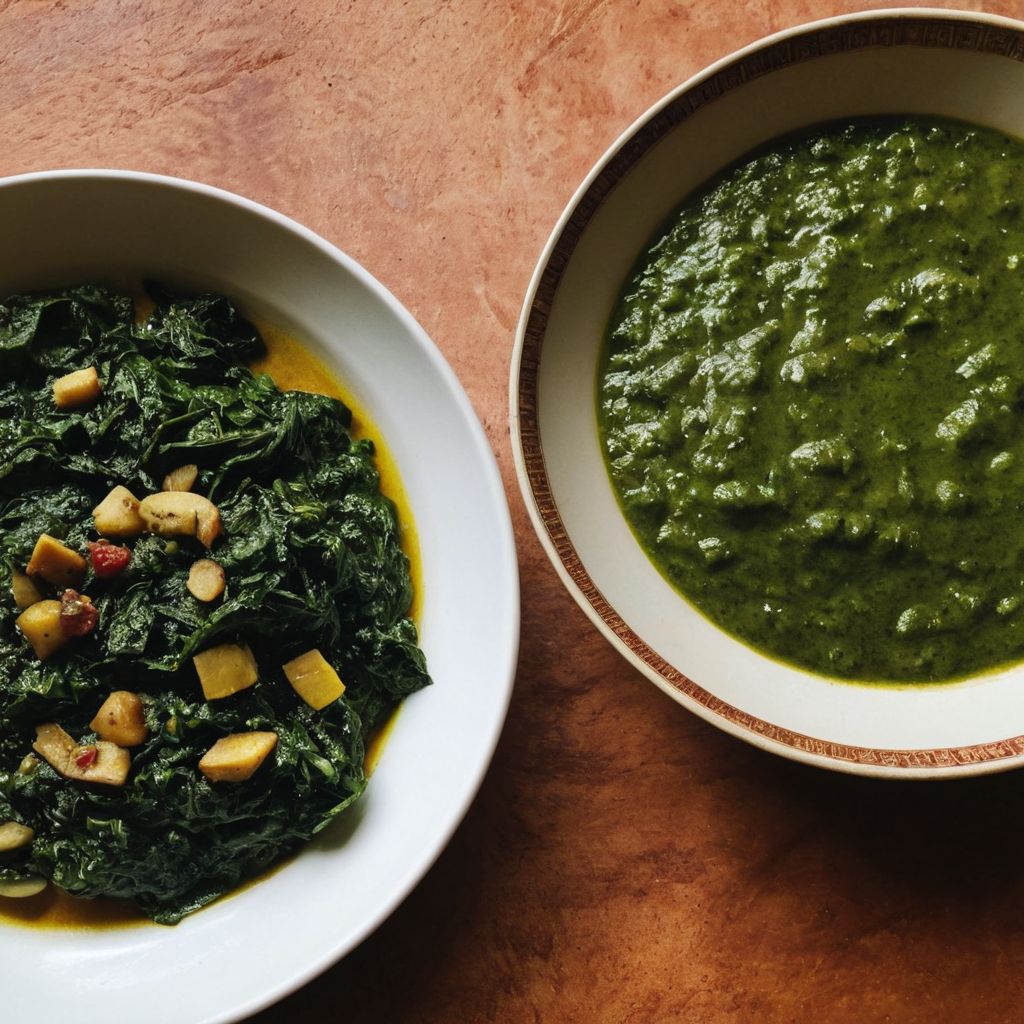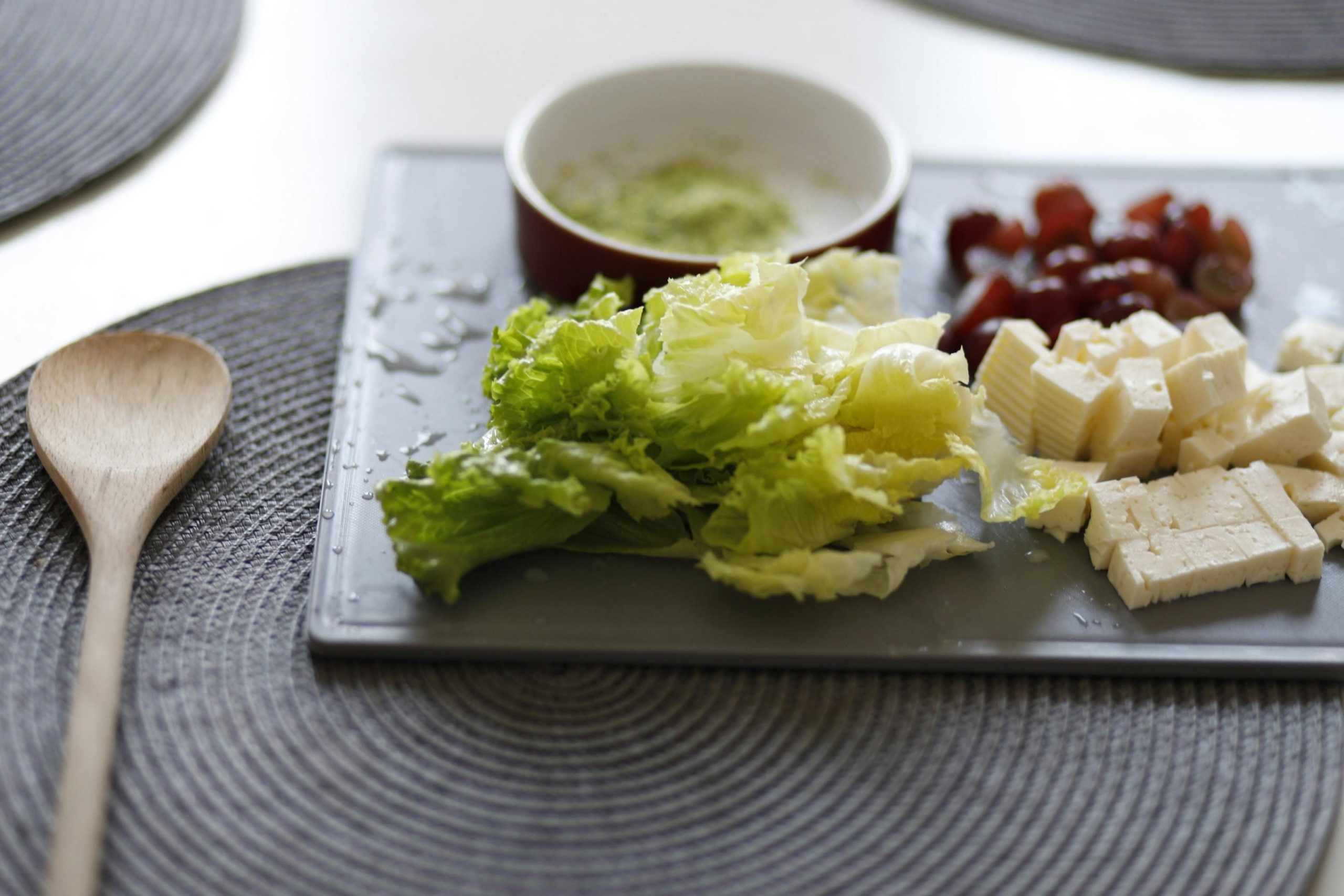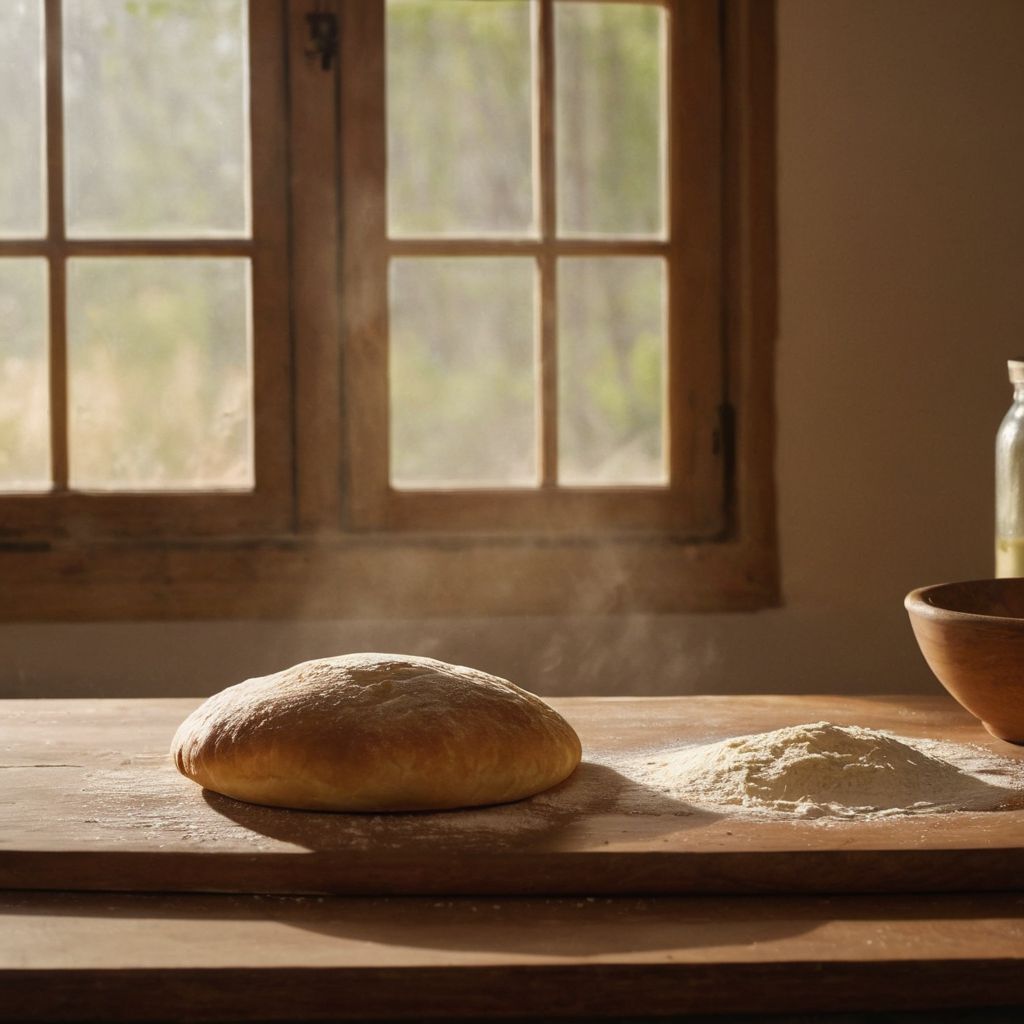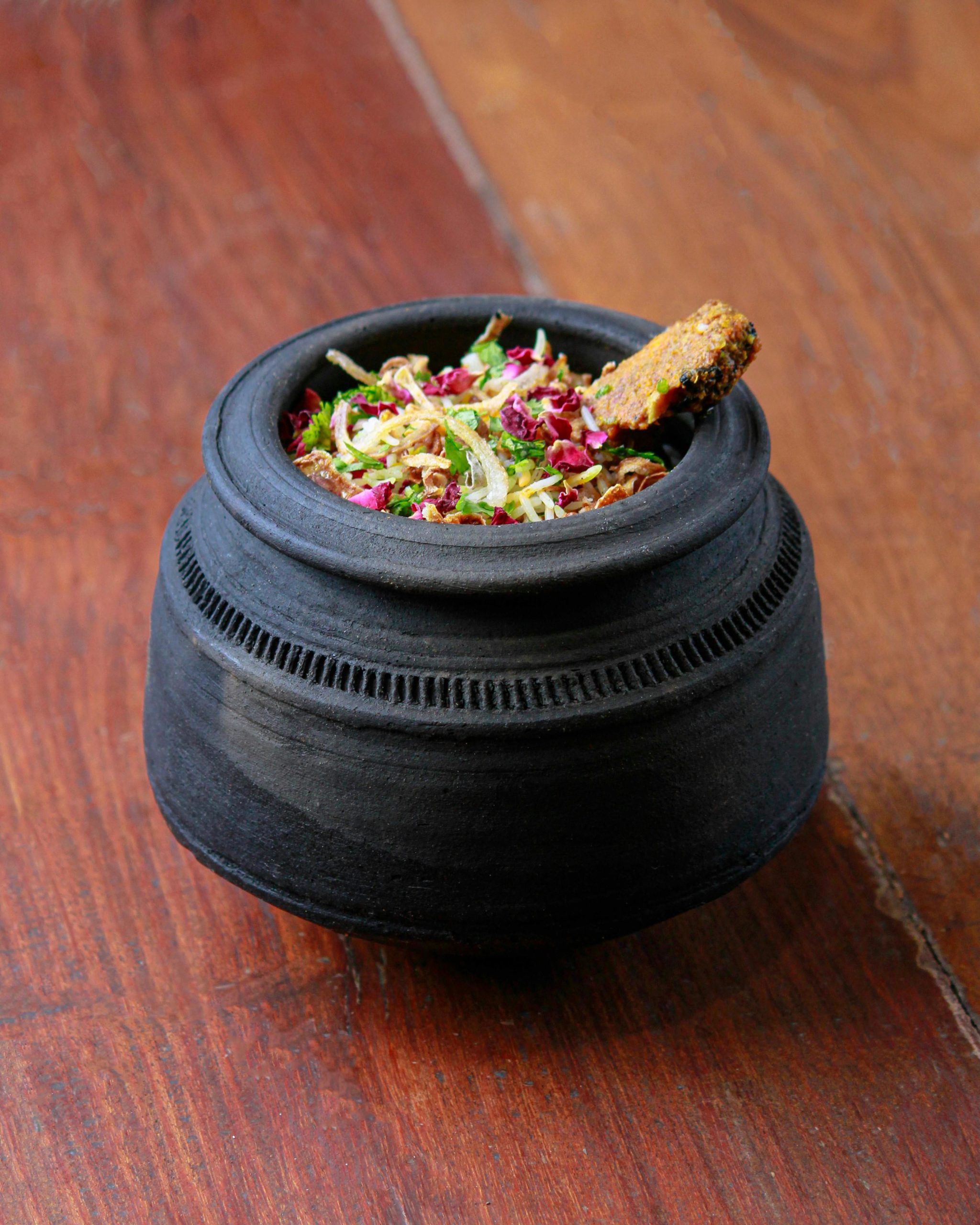Have you ever savoured the rich, verdant flavours of Saag, a classic Indian dish?
Finding authentic and delicious Indian recipes can be a challenge, especially for iconic dishes like Saag.
Saag is a traditional Indian dish made from a blend of spices and greens, often including spinach, mustard greens, or collard greens, that’s simmered to perfection.
In our blog post, we’ll dive into the fascinating origins of Saag, explore its regional variations, and provide you with simple recipes to prepare this delightful dish at home. Plus, we’ll offer tips on serving, storing, and even how to enjoy Saag on culinary tours.
The Origins and Meaning of ‘Saag’
The term ‘saag’ originates from the Sanskrit word shaak which translates to ‘leafy green vegetables’. This etymological root underscores the foundational elements of this beloved Indian dish, which primarily consists of various greens. Historically, saag has been a staple in the diets of many regions across the Indian subcontinent, reflecting the agricultural practices and the availability of different types of greens like spinach, mustard, and collard greens.
Over the centuries, saag has evolved but retained its core identity centred around greens. Traditionally prepared by simmering these greens until they reach a soft, palatable texture, the dish is often enhanced with locally sourced spices and sometimes combined with meats or paneer, an Indian cheese. This preparation method not only highlights the versatility of saag but also its deep-rooted significance in Indian culinary traditions, making it a symbol of both sustenance and cultural heritage.
Regional Variations of Saag Indian Food
Saag, a beloved dish in Indian cuisine, showcases remarkable regional variations that reflect the diversity of India’s culinary landscape. In Northern India, saag often includes a hearty mix of mustard greens and spinach, enriched with dairy products like paneer and cream, which are staples in this region’s diet. Northern saag dishes, such as Saag Paneer and Sarson ka Saag, are typically creamier and have a robust flavour due to the inclusion of aromatic spices like garam masala and garlic. This makes the dish not only a treat for the palate but also a reflection of the agricultural and cultural richness of Northern India.
Moving to Southern India, the version of saag, often referred to as saag aloo where ‘aloo’ means potato, takes on a different character. Southern variations might lean towards including coconut milk and tamarind, giving the dish a tangy and slightly sweet flavour that contrasts with the creaminess of its northern counterpart. Ingredients like curry leaves and dried red chillies are also prevalent, adding a distinctive taste and heat that is characteristic of Southern Indian cuisine. These regional differences underscore how local ingredients and traditional cooking methods can influence the basic composition of saag, making it a versatile and adaptive dish across various Indian locales.
Key Ingredients in Saag Indian Food

Saag, a beloved Indian dish, is known for its vibrant and hearty blend of leafy greens and aromatic spices. The key ingredients in saag include mustard greens, spinach, and sometimes fenugreek leaves, each contributing to the dish’s rich green hue and nutritious profile. These greens are not only packed with vitamins but also provide a canvas for the spices to shine, creating a symphony of flavors that is both comforting and invigorating.
Spices play a pivotal role in saag, with garam masala, turmeric, and ground coriander being staples in most recipes. These spices not only add depth and warmth but also have health benefits, such as anti-inflammatory properties. To enhance the texture and add a subtle sweetness, cornmeal flour is often stirred in, helping to thicken the saag to a perfect consistency.
The cooking process itself is crucial, as slow cooking allows the flavors to meld beautifully. Ingredients like onions, ginger, and garlic are sautéed to form a flavorful base, while green chilies introduce a hint of heat. The inclusion of ghee or butter towards the end of cooking enriches the dish, giving it a luxurious finish that makes saag a soul-warming food.
How to Prepare Delicious Saag at Home
Preparing saag at home is a delightful way to bring a piece of Indian culinary tradition into your kitchen. Start by washing and roughly chopping the greens, such as mustard greens, spinach, and optionally fenugreek leaves. In a large pot, heat some oil and add cumin seeds to splutter, then incorporate finely chopped onions, garlic, and ginger, cooking until they soften and release their aromas.
Next, add the chopped greens in batches, allowing each addition to wilt before adding more. Stir in spices including turmeric, garam masala, and ground coriander to coat the greens evenly. Pour in a little water and let the mixture simmer on a medium-low heat, allowing the greens to cook down and meld with the spices. For a smoother texture, an immersion blender can be used to blend the saag right in the pot.
Once the greens are fully cooked and the saag has reached your desired consistency, stir in a tablespoon of cornmeal flour to thicken it further. Season with salt to taste. Finally, enhance the saag by stirring in a dollop of ghee or butter, which adds a rich, creamy texture. Serve your homemade saag hot, ideally with a side of Makki di Roti (cornmeal flatbread) for an authentic experience.
Understanding the Difference Between Saag and Palak

When exploring Indian cuisine, the terms saag and palak often come up, and they can be confusing. Essentially, saag refers to a variety of leafy greens, including but not limited to spinach, mustard greens, and fenugreek leaves. This mix can vary greatly depending on regional recipes and available ingredients. In contrast, palak specifically means spinach. Thus, when you’re eating a dish labelled as ‘palak’, you can expect it to contain just spinach, making it a more narrowly defined ingredient compared to the broader category of saag.
The preparation methods for dishes using these greens also differ. Saag dishes, like the popular Saag Paneer, often feature a blend of greens cooked down and seasoned with a mixture of spices such as garam masala and turmeric. This creates a complex flavor profile and a textured dish. On the other hand, a typical palak paneer recipe involves cooking spinach until it’s very soft, often pureed, and then mixed with spices and paneer (Indian cheese), resulting in a smoother, creamier dish. These differences highlight the unique culinary experiences each type of green offers in Indian cooking.
Best Ways to Serve Saag Indian Food

Saag, with its creamy texture and rich flavour profile, pairs wonderfully with a variety of accompaniments that enhance its taste. Traditional Indian breads like naan and makki ki roti are perfect for scooping up the saag, allowing diners to enjoy every bit of its deliciousness. The softness of naan and the rustic texture of makki ki roti complement the smoothness of saag, making each bite a delightful experience. Additionally, serving saag with basmati rice can be a great choice as its fluffy grains absorb the flavours of the saag beautifully, creating a balanced and fulfilling meal.
For those looking to add a twist to the traditional serving methods, consider pairing saag with different types of breads or rice. Options like garlic naan or jeera rice introduce new flavours that can elevate the overall dining experience. These combinations not only cater to the palate but also add a visual appeal to the meal, making saag a versatile dish suitable for both everyday dining and special occasions. Whether you choose the classic pairings or mix it up with different flavours, saag remains a comforting and satisfying dish that is best enjoyed shared around the table.
Storage Tips for Saag Indian Food
Storing saag correctly is crucial to maintaining its freshness and flavour. After purchasing or harvesting, wash the saag thoroughly to remove any dirt or impurities. It’s best to rinse the leaves multiple times in clean water. Once washed, let the saag dry completely. This prevents moisture from causing decay when the saag is stored.
For optimal storage, place the dry saag in an open zip lock or paper bag; avoid sealing it as this can trap moisture and accelerate spoilage. Store the bag in the crisper drawer of your refrigerator, where the temperature is cool and consistent. Remember, do not store saag near fruits like bananas or apples, as their ethylene gas can cause the greens to spoil quicker.
Experience Saag Indian Food with Indulge‘s Culinary Tours
INDULGE offers a unique chance to dive into the world of Indian cuisine right in the heart of Zurich. Their curated culinary tours provide an exclusive experience, focusing on Indian dishes like saag, which is celebrated for its rich blend of spices and greens. This is a perfect opportunity for both locals and tourists to explore the authentic flavours of Indian food without leaving Switzerland.
During these tours, participants will:
- Learn about the ingredients and cooking techniques used in making traditional saag
- Experience the dish as part of a broader exploration of Indian cuisine
Booking a tour with INDULGE not only satisfies your taste buds but also enriches your culinary knowledge, making it a must-try for every food enthusiast.
Frequently Asked Questions
What is saag made of?
Saag is made from a blend of leafy greens including mustard greens, spinach, and sometimes fenugreek leaves. These greens are simmered with a mix of aromatic spices such as garam masala, turmeric, and ground coriander. Additionally, ingredients like onions, ginger, garlic, and green chilies are sautéed to form a flavorful base, and the dish is often enriched with ghee or butter towards the end of cooking.
Is saag the same as spinach?
No, saag is not the same as spinach. Saag refers to a variety of leafy greens, which can include spinach, mustard greens, and fenugreek leaves, among others. In contrast, ‘palak’ specifically refers to spinach. Therefore, while spinach can be a component of saag, it is not synonymous with saag.
What saag is called in English?
Saag translates to ‘leafy green vegetables’ in English. The term originates from the Sanskrit word ‘shaak’, which directly refers to any leafy green vegetables.
What is the difference between saag and paneer?
Saag refers to a dish made from a variety of leafy greens and spices, while paneer is a type of Indian cheese. Paneer can be added to saag to create dishes like Saag Paneer, where the cheese is incorporated into the spiced greens mixture. Thus, saag is the base dish, and paneer is an ingredient that can be added to it.
Is saag spicy?
The spiciness of saag can vary depending on the recipe and regional variations. Generally, saag includes spices like garam masala, turmeric, and green chilies, which can add a hint of heat. However, the overall spiciness can be adjusted to suit personal taste preferences.








